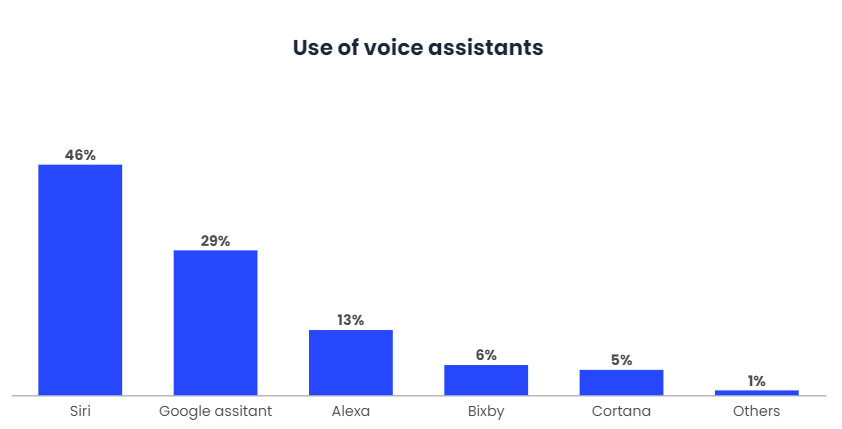The evolution and expansion of conversational interfaces

The introduction of new technologies has meant the introduction of new trends in web design. Some of these trends are here to stay, while others will be lost along the way. Within the trends that will prevail over time, conversational interfaces based on Artificial Intelligence (AI) will become the perfect substitute for web forms, thanks to the help and trust they generate in users.
Conversational interfaces vs. web forms
In essence, a conversational interface aims to give technology a more human face, less polished and promotional. Instead, users perceive a more personal and immediate exchange of information. This “conversation” can be by voice (Alexa, Siri, OK Google) or in text (any Chatbot assistant).

These new, more dynamic interfaces take precedence over more static ones, such as web forms, since, on the one hand, they allow users to control what information and in what order they receive it and, on the other hand, they provide users with details on a large number of topics without saturating the interface with a confusing amount of content.
Advantages of conversational interfaces
It should not be forgotten that poor customer service means an unsatisfactory consumer experience that can lead to very significant losses, as is the case in the United States, where poor UX management has resulted in losses of more than 1.6 trillion dollars in just one year.
More than ever, consumers need convenience and speed. A conversational interface, with its natural way of communicating, can provide the perfect solution for consumers, who instead of having to learn complex interface structures, can have a conversation instantly.
While this is the main advantage of conversational interfaces, it is not the only one.
- Users and technologies are at the same point:
With more than 33% of the world’s population having access to smartphones and voice-based devices, users are ready to interact through voice-based interfaces immediately. Thanks to the use of this type of communications, companies can avoid between 10-15% of aborted conversations through mobile applications.
- Personalized experiences:
Thanks to advances in voice technology, users can now personalize everything from accent, tone, genre, and even the rhythm of speech. This use of the custom speech pattern allows companies to create a deeper personal connection with the user.
By truly personalizing the experience, users begin to think of devices as a closer person rather than a machine.
For example, a French telecommunications company that implemented a voice Chatbot, based on a receptionist pattern, greatly improved customer service satisfaction by halving the duration of the conversation as well as reducing the rate of multiple transfers. Thanks to Artificial Intelligence, the interface was also able to autonomously resolve 20% of all conversations, increasing brand productivity.
- Realistic feeling:
People are accustomed to communicating through speech, so conversational interfaces mimic that pattern. By joining a voice with technology, it makes the whole process more natural and realistic and less artificial. Conversely, the same feat cannot be achieved with visual interfaces.
Many companies are switching from visual interfaces to voice-based interfaces to keep interaction more realistic. The changing trend is here to stay and will continue at a faster pace in the coming years.
- Multiplatform support:
Whether the company wants to use stand-alone applications or services, or wants to integrate a voice-based interface with a unified platform, it can easily do so thanks to cross-platform support.
Platform support simplifies the process by ensuring that all your applications and services are compatible and work seamlessly with conversational interfaces. The user does not need to download separate applications to make it work.
- Interactions of the IoT device:
If the predictions about the number of devices expected in the next few years are true, 50 billion devices connected to the Internet by 2020, smart homes, smart cities and smart devices will not be just buzzwords; they will have become a phenomenon that will change people’s lives.
Despite their success, they will have to face a challenge that is hindering their wider adoption, the lack of support for visual interfaces. The lack of support means that developers will have to create a separate interface for IoT devices.
And it is in the separate interface for IoT devices where conversational interfaces can come into play and where they will help IoT devices incorporate naturally into the environment.
- Evolution of design:
Voice-based interfaces have brought a revolution in design. Previously, interfaces were designed to support both physical and visual inputs. Now, UX designers have to design interfaces and experiences that support voice-based inputs.
Having criteria based on input data will force companies to focus on aspects that UX designers have never explored. Topics such as creating proactive designs, giving voice-based suggestions through context analysis, and prioritizing data should be considered beforehand.
By taking advantage of the context of voice-based suggestions, UX designers should make it easier for users to understand what voice-based interaction systems can do for them. Similarly, UX designers will use context to create a flow of users for their proactive designs.
What should you pay attention to?
Despite the obvious benefits they can bring, there are things to keep in mind when working with conversation interfaces.
A conversation interface is never a goal in itself. While consumers are looking for convenience and speed, and a conversation interface can offer a suitable solution, it is important for each company to validate whether a conversation interface actually works more easily and quickly than other forms of interaction.
Much of the success will lie in the information they can offer, as it should be as close as possible to a conversation between people away from dialog versions based on a list of frequently asked questions and that can cause frustration in users.
It is advisable that the interfaces instead of openly asking what the user wants, proactively offer some options so you can get what you need with fewer touches.
It is also worth mentioning the investment and maintenance that the implementation of a conversational element in the company will entail. Initially, the conversational user interface is cost-effective and stands out especially when it comes to post-implementation costs compared to Natural Language Processing (NLP). However, it is important to take into account the cost/benefit ratio it will bring to enterprise budgets.
What to expect in the future?
The latest reports on the state of Chatbots and conversation assistants predict that the market will experience considerable growth of nearly 1.3 billion euros worldwide and will register a compound annual growth rate (CAGR) of up to 2024.
This growth will increase with the introduction of voice interfaces in social networks and the large-scale adoption of cloud-based technologies. In terms of usage, the banking, financial services and insurance (BFSI) sector will represent the highest market share.
Conclusions
Today’s consumers expect companies to make their travel as simple and straightforward as possible. Creating a conversational interface is the best way to meet this expectation. Plus, making the website more appealing than ever.
While conversational experiences with users are a relatively new concept for most companies, they have many benefits for those who choose to create them, as they are expected to remain for a long time in the business landscape.
This permanence will be supported by the parallel evolution of other innovative trends, such as the consolidation of IoT devices or the predisposition of users to solve their everyday situations through their smartphone.


